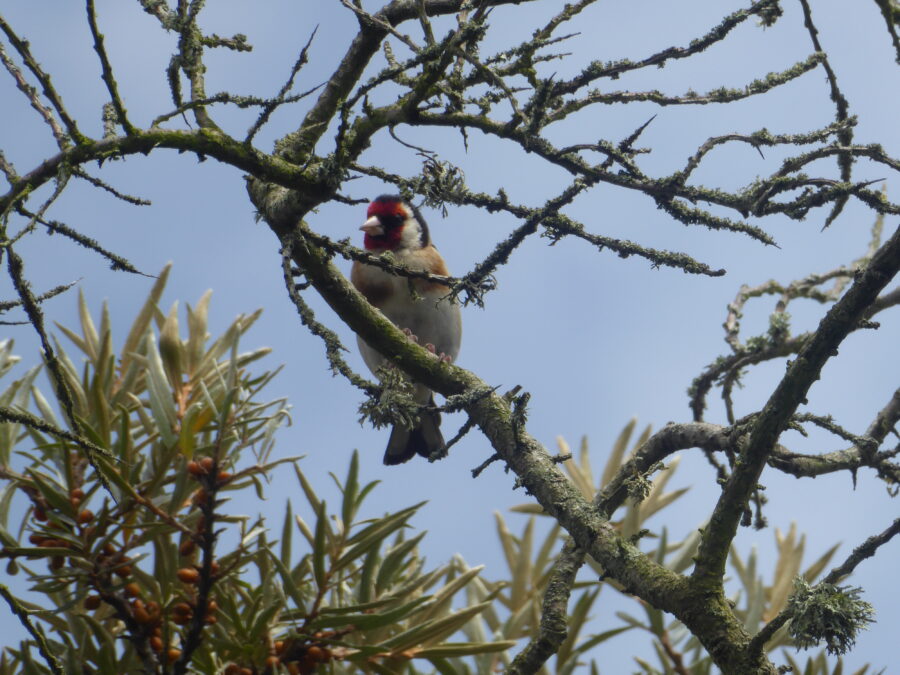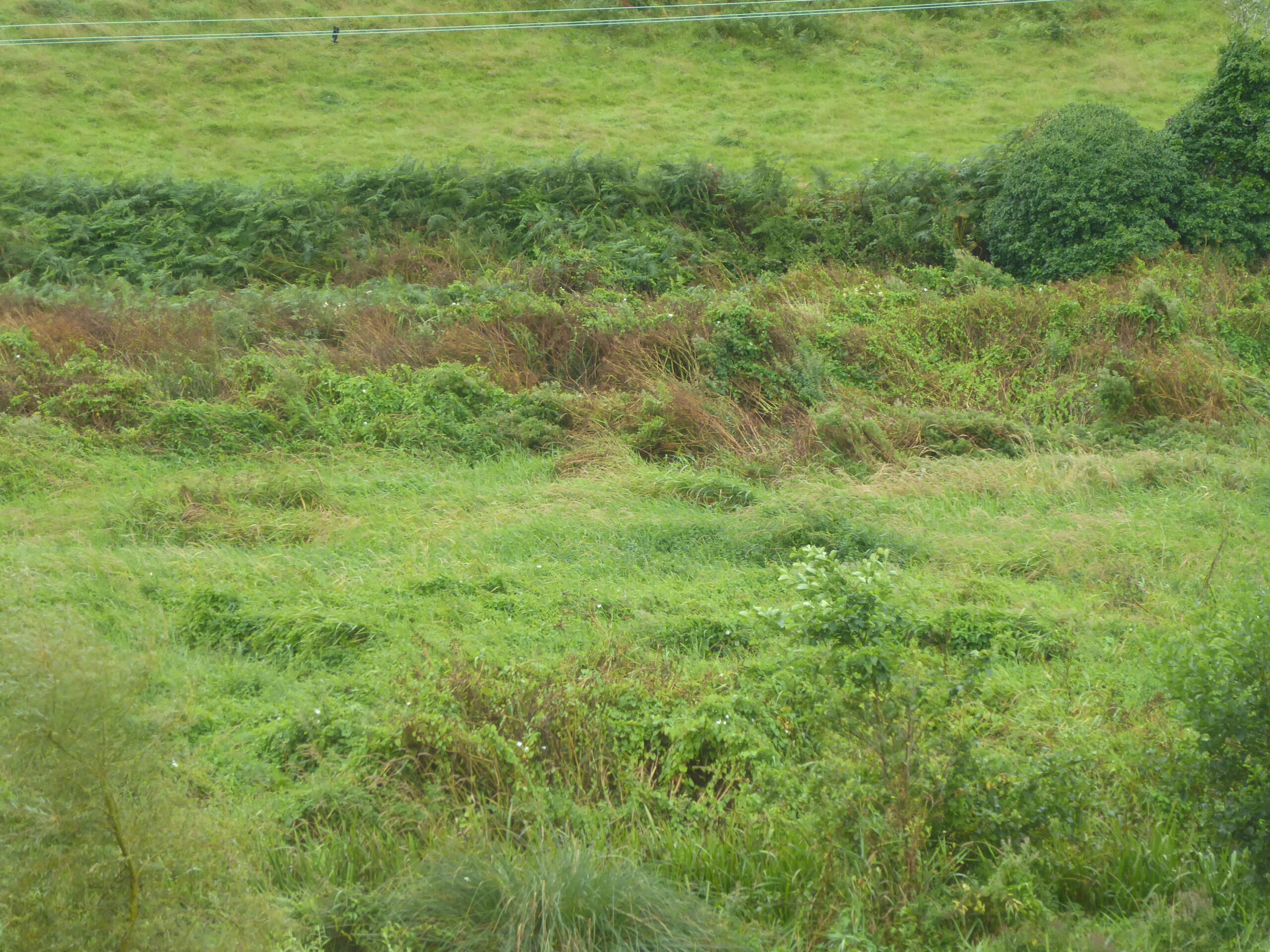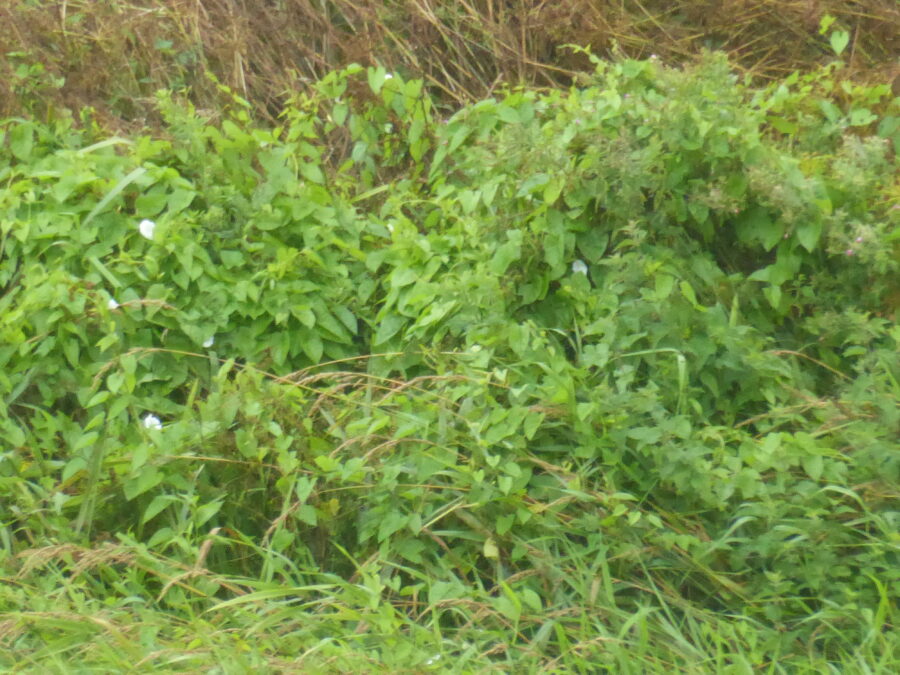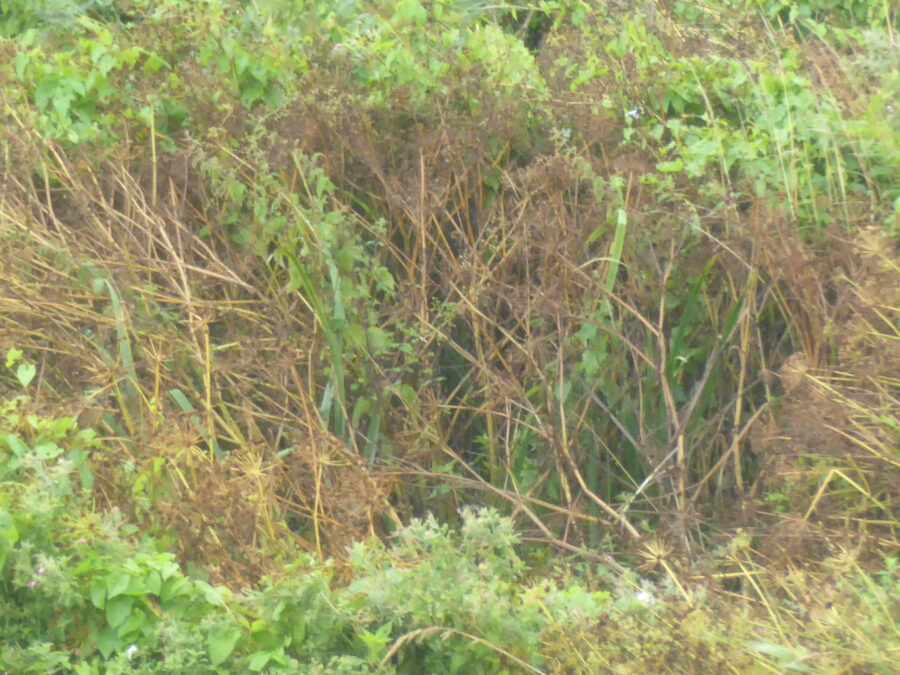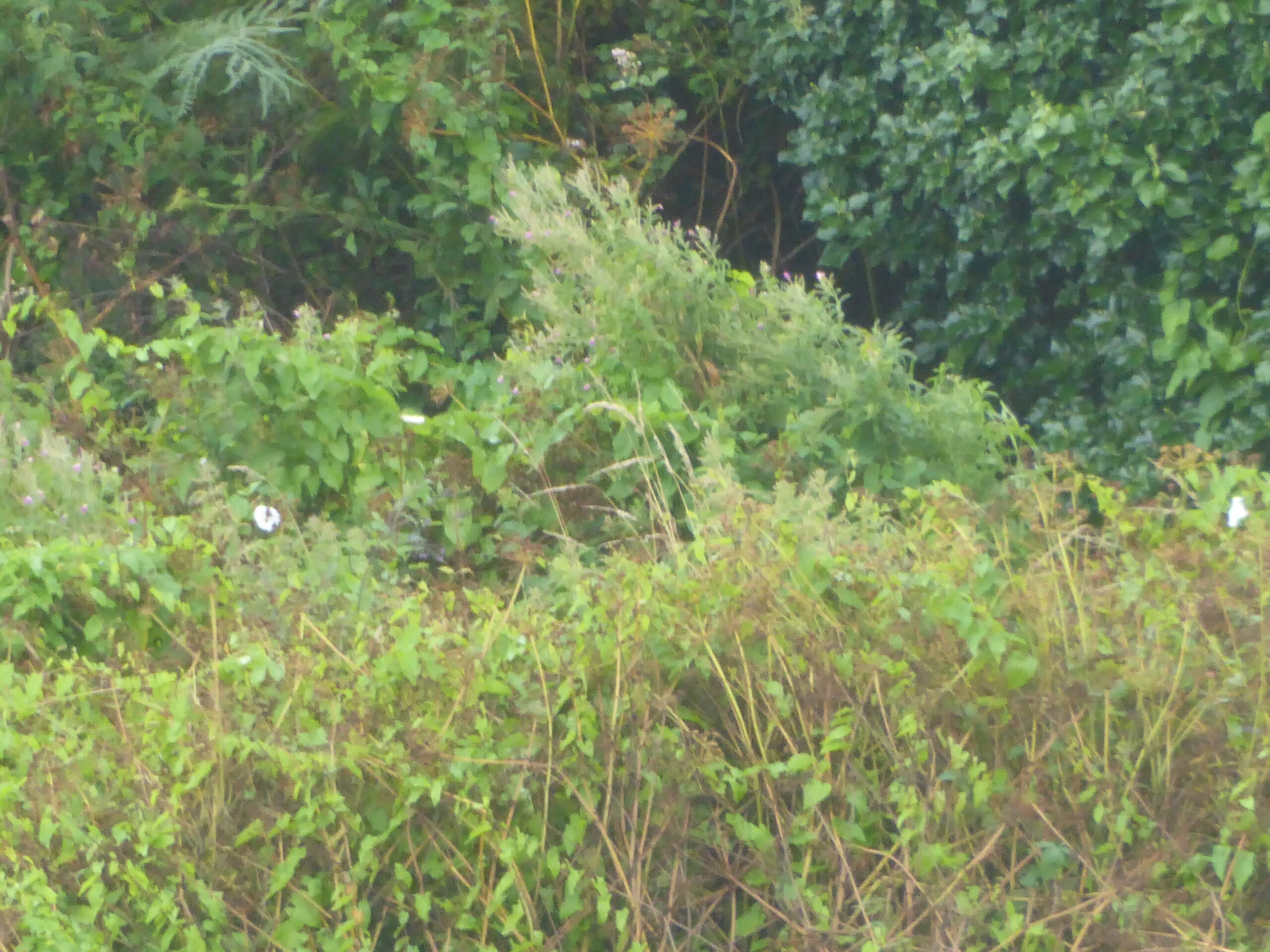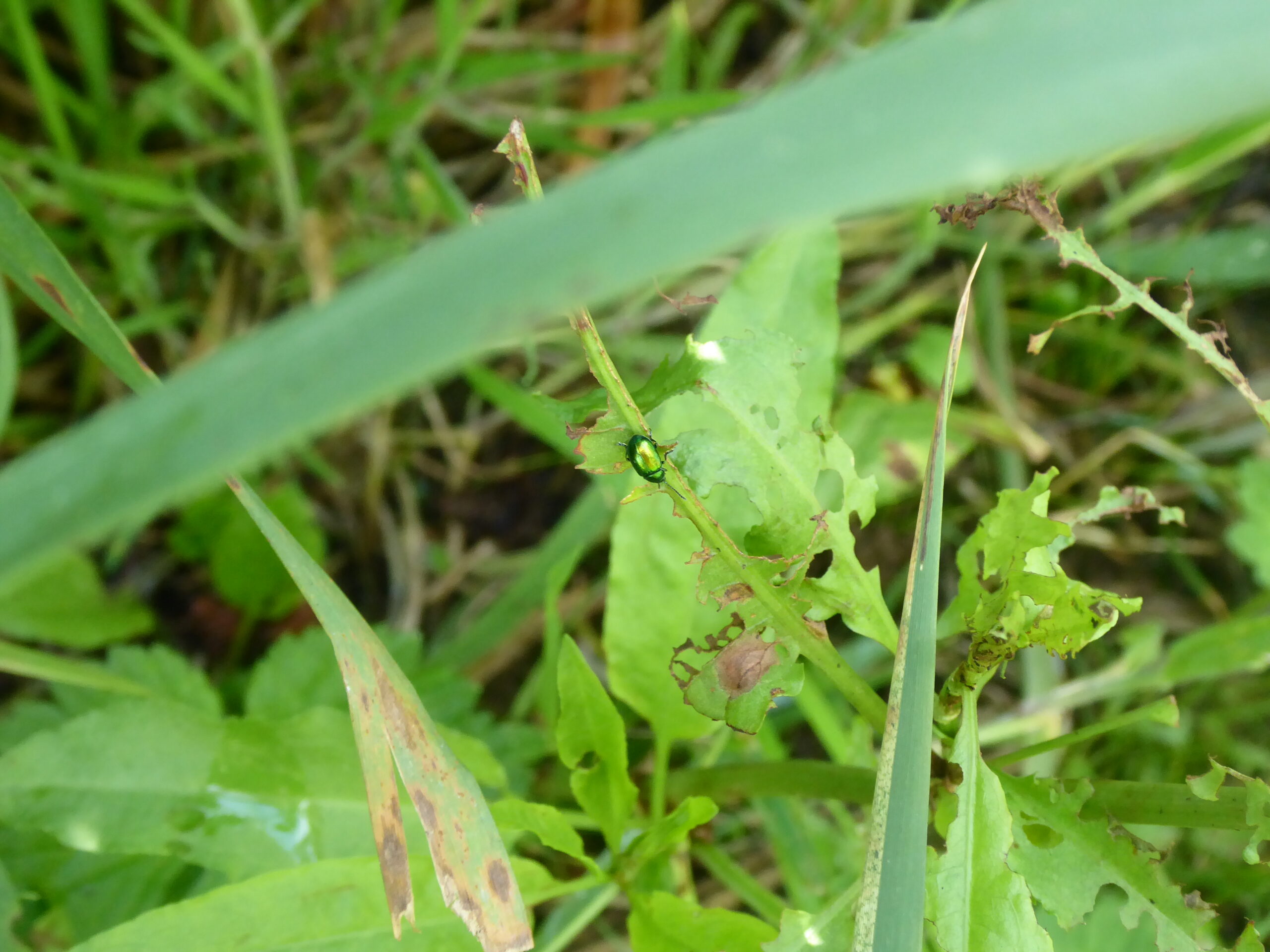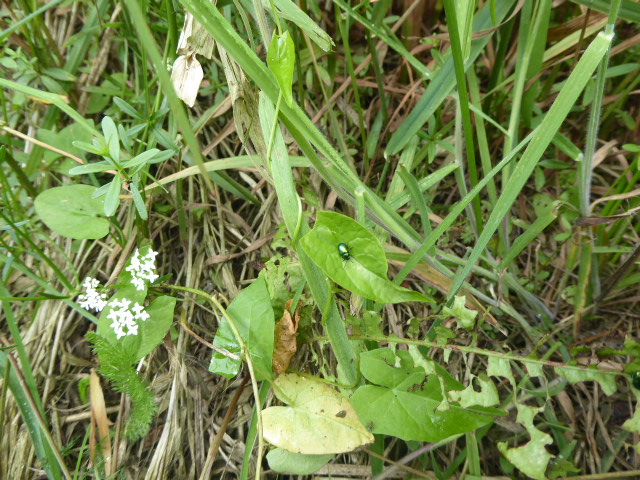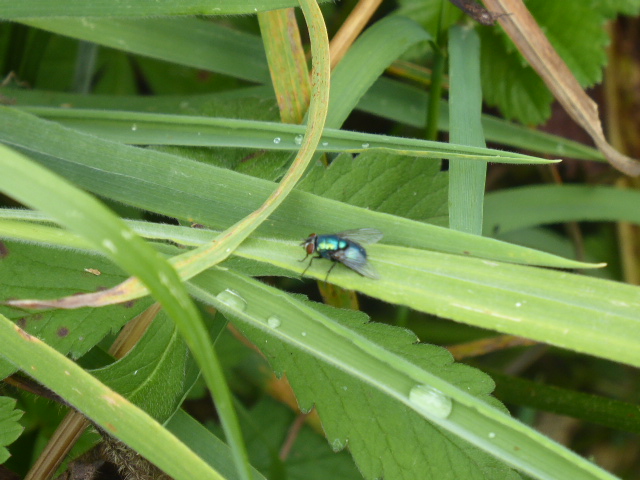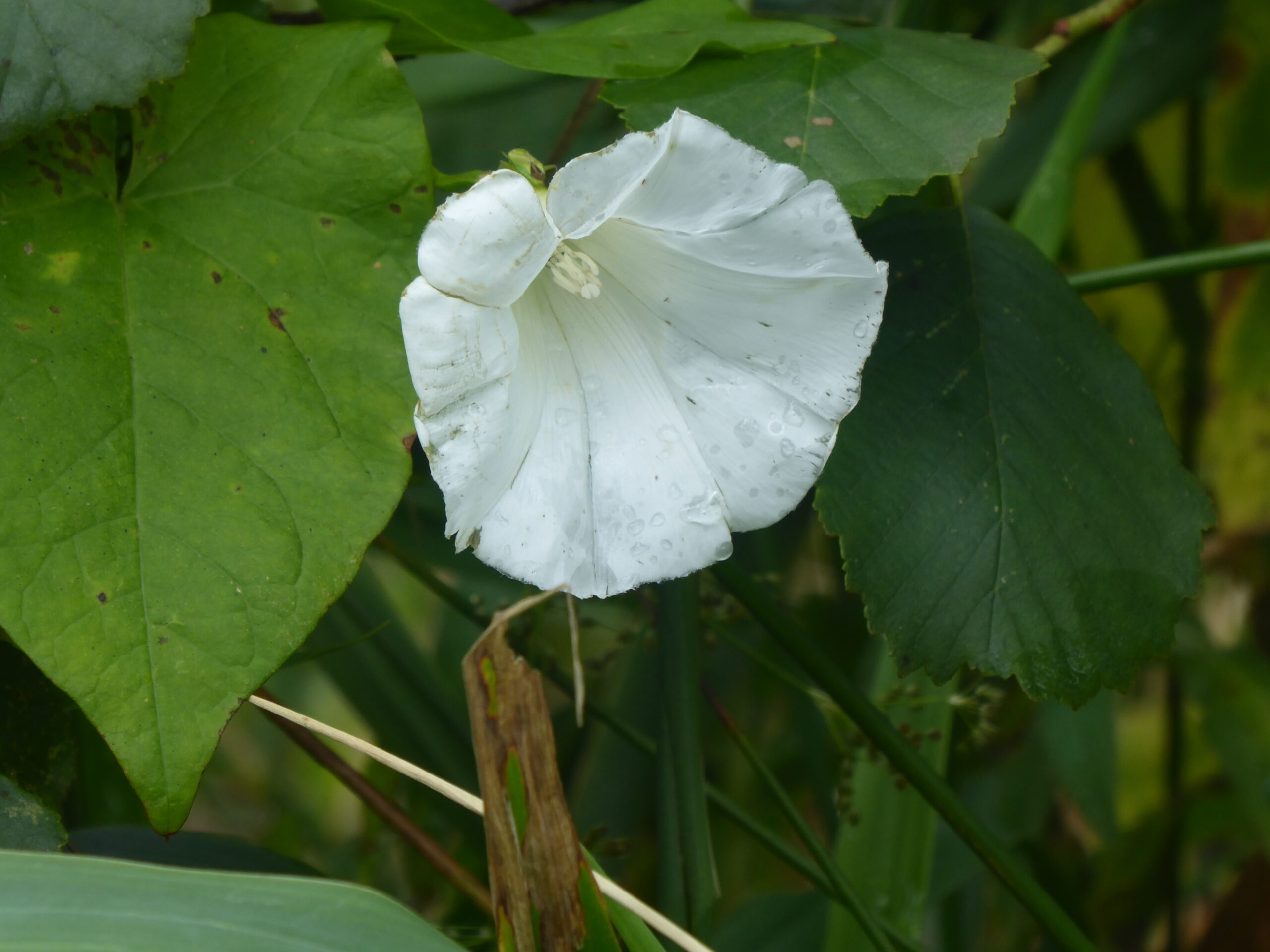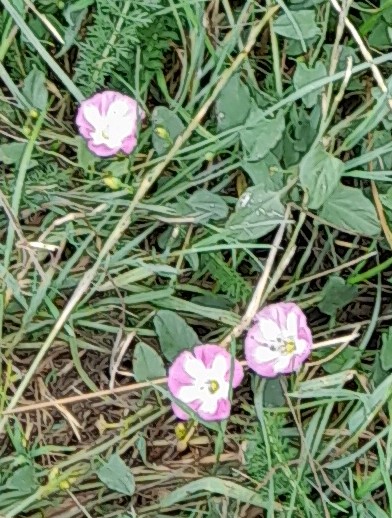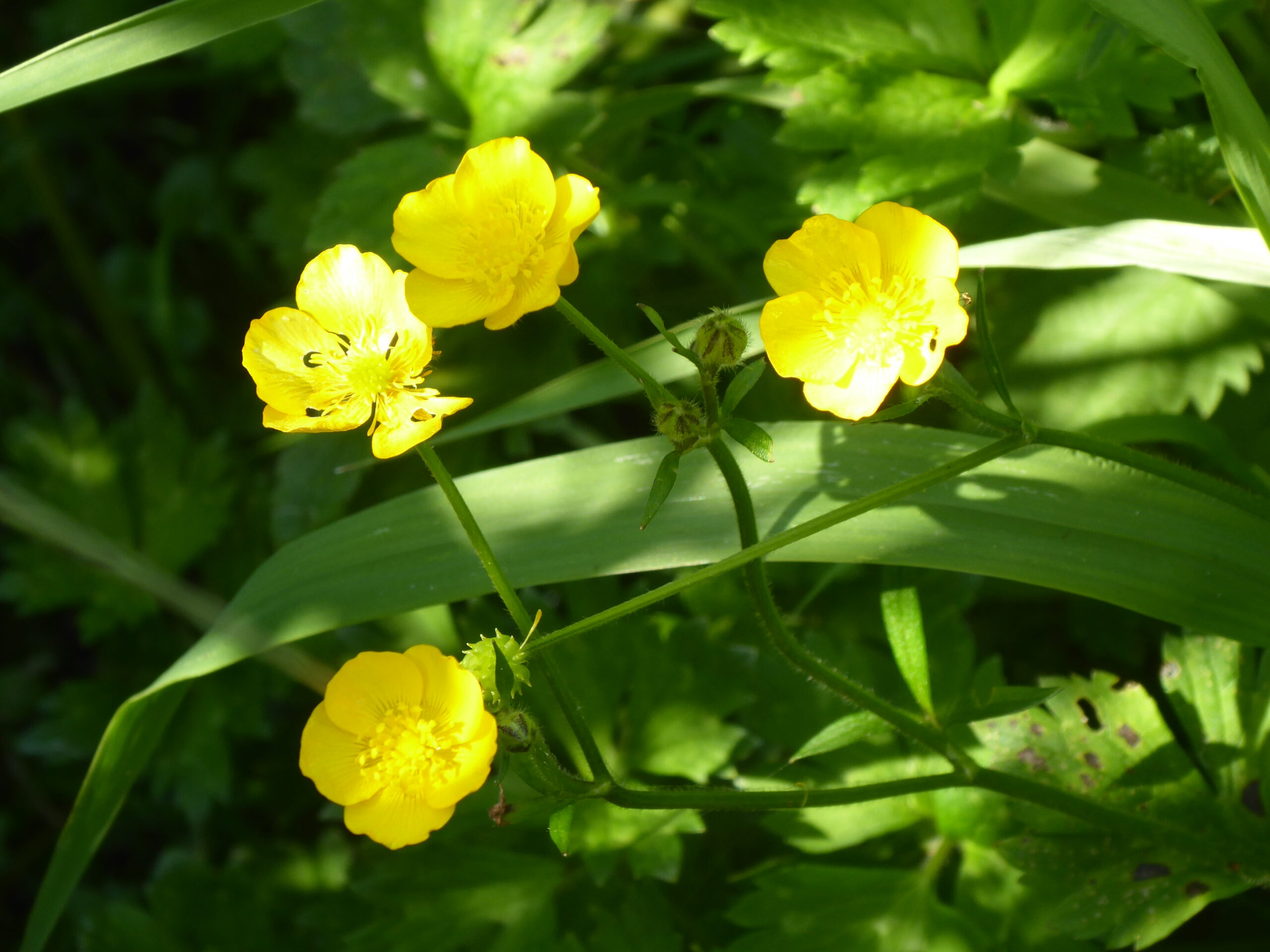The valley today is windswept and rainy as yet another storm blows in. The grass is flattened, and the green clumps are tangles of bindweed tumbling over the skeletons of hemlock water dropwort and other foliage, their white bells scattered over the valley. The far edge is hemmed with a flourish of bracken. Any brown you can see is dead HWD. There are some frothy white flowers in the distance, but I’m not sure what they are, possibly meadowsweet, but I’ll have to investigate when the weather improves. Finally, there are some swathes of purple, which is willowherb, probably the great willowherb that has been in our patch. Compared to last month, the valley is greener and lusher, generally, due to all the rain we have had.
Close-ups:
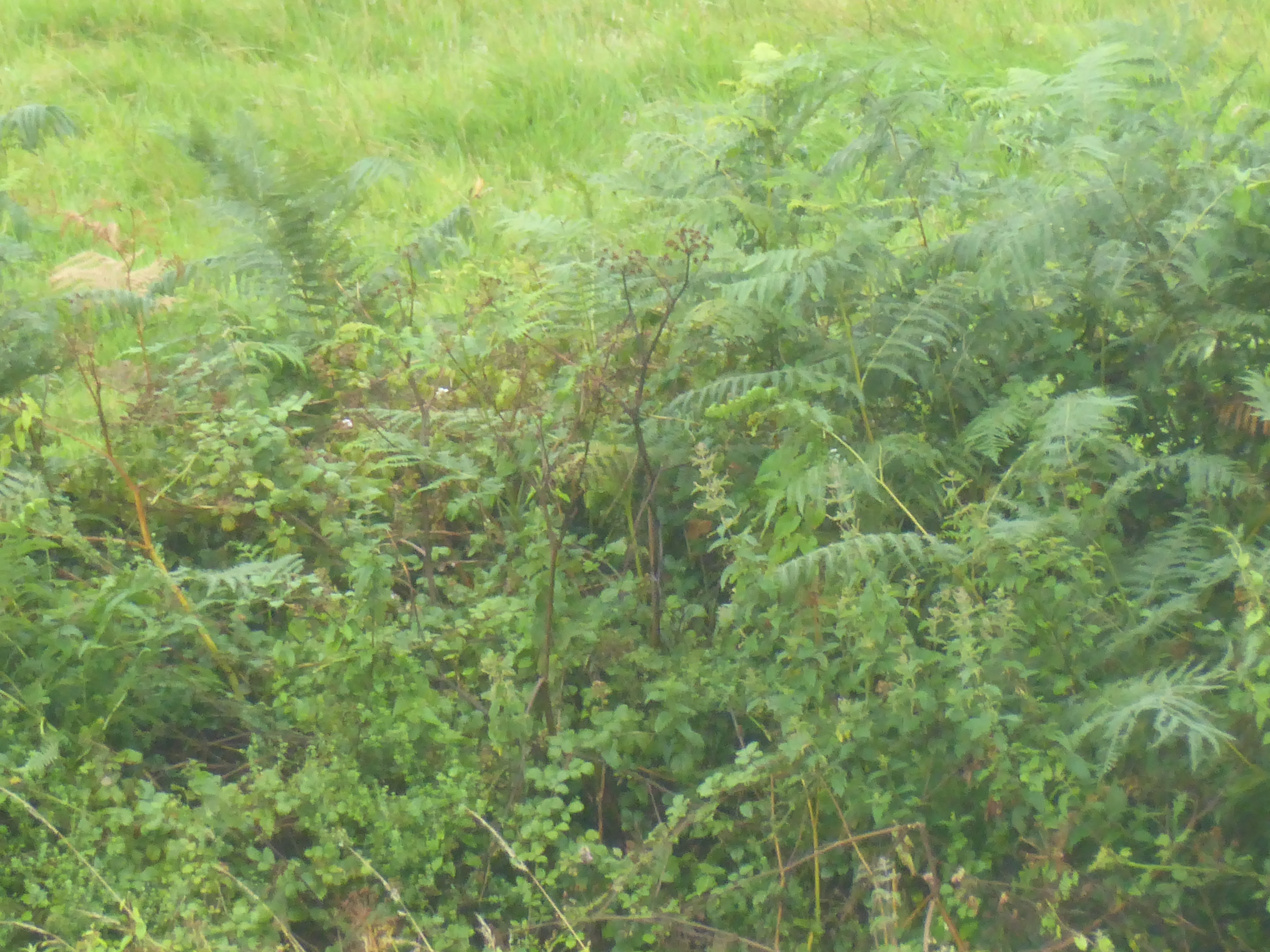
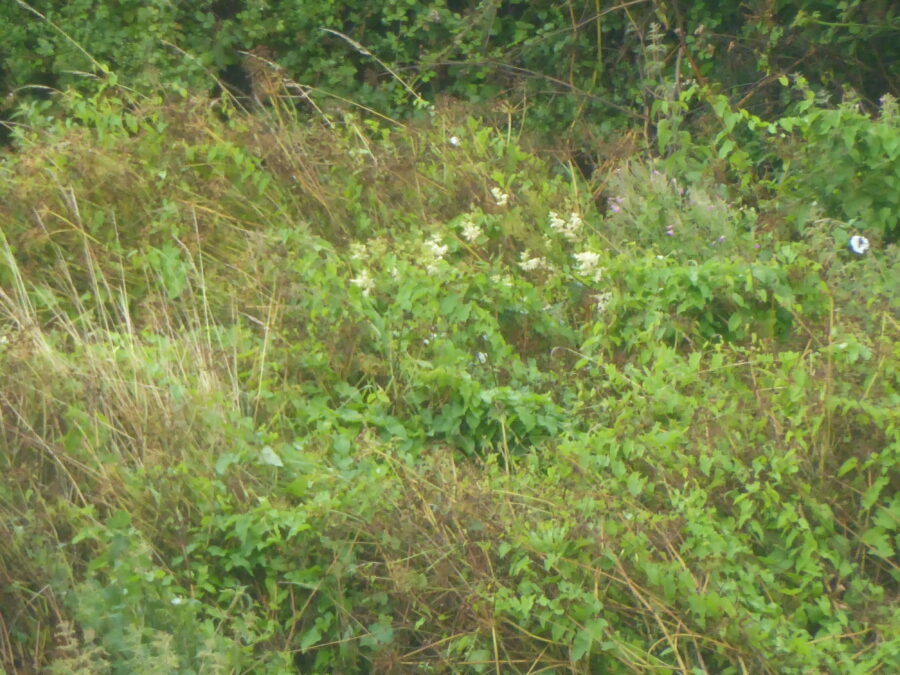
To brighten up the post, here is my best goldfinch photo so far, which I took the other day, when we were doing the Big Butterfly Count. It is sitting near the top of one of the sea buckthorn trees.
